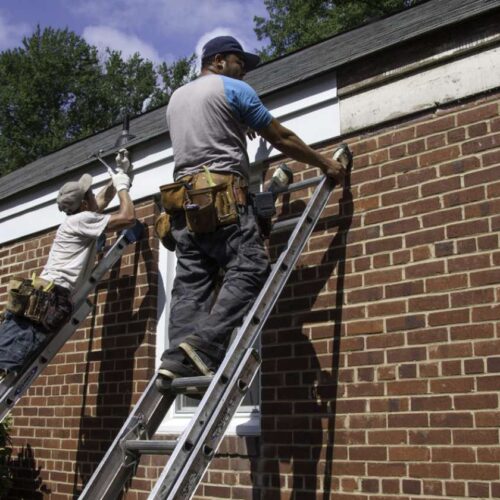Introduction
The number of contractors and Hispanic workers who died on the job increased in 2013 even as the overall tally of worker deaths declined, according to preliminary data released Thursday by the U.S. Bureau of Labor Statistics.
In all, 4,405 workers died from injuries sustained on the job last year — 223 fewer than the BLS reported in 2012. That equates to a rate of roughly 3.2 deaths for every 100,000 full-time equivalent workers, down slightly from 2012.
The new tranche of data came on the same day that the Occupational Safety and Health Administration released a final revised rule requiring employers to notify OSHA within eight hours if an employee dies and within 24 hours when an employee is hospitalized, suffers an amputation or loses an eye. Previously, employers were only required to report deaths and the hospitalization of three or more employees.
“Forty-four hundred five on-the-job deaths is 4,405 too many,” David Michaels, assistant secretary of labor for occupational safety and health, said on a conference call with reporters. “We can and must do better.”
According to the BLS data, the majority of workers killed on the job in 2013 — 1,740 — died in transportation accidents; 717 died via contact with objects and equipment; 699 died from falls, slips or trips; and 330 died from exposure to harmful substances or environments. Violence — either homicides or suicides — accounted for 753 deaths, or roughly one out of every six.
The data were released on the 13th anniversary of the terrorist attacks on Sept. 11, 2001, which killed 2,886 workers. The BLS will release the final 2013 fatality numbers in the spring; historically, the revised totals are higher than those reflected in the preliminary data.
While overall workplace fatalities decreased, two groups — contract workers and Hispanic workers — saw increases.
For workers classified as “Hispanic or Latino” by the BLS, the fatal injury rate in 2013 topped 3.8 per 100,000 full-time equivalent employees, 0.6 deaths higher than the national average. Seven hundred ninety-seven Hispanic workers died from job-related injuries, the highest total since 2008; 708 died in 2012.
Of the Hispanic workers who died in 2013, 527 were foreign-born, according to the BLS. Mexican-born workers accounted for 352 — or 42 percent — of the 845 fatal injuries among all foreign-born workers.
“It’s no surprise that the number remains high,” said Rebecca Smith, deputy director of the National Employment Law Project, a worker advocacy and research group. “In part, that’s a function of many Latino workers moving to more dangerous forms of employment, including construction. But also, there’s a huge overlay between the high incidents of Latinos who do [contract] work…It’s a mix of being in more dangerous work and contract work moving into more dangerous sectors. These statistics point to exactly the challenge for our country as workers move more and more into subcontracted jobs.”
The BLS data show that contract, or temporary, workers — those employed by one firm but working under the guidance of another — are dying at a faster clip since the agency began tracking the category in 2011. In 2013, 734 contractors died as a result of work-related injuries, up from 715 in 2012 and 542 in 2011. The Center for Public Integrity highlighted the plight of temporary workers in a December 2012 article about temp worker Carlos Centeno, who was fatally scalded in a Chicago factory.
“It’s a growing problem that temporary workers have injuries and fatalities higher than the rest of the population,” said Mary Vogel, executive director of the National Council on Occupational Safety and Health, a coalition of local and state worker safety groups. “That’s one reason we have to be really concerned about contract workers: they’re continually changing jobs, so they’re more apt to be exposed to hazards that they’re not trained for. That’s a big piece of the problem: they don’t get the training.”
Vogel also called for the BLS to release more detailed data on workplace fatalities, including the names of employers and the manner of death for the deceased workers. Having access to more comprehensive fatality information would help employers develop strategies to prevent workplace fatalities, she said.
The data released Thursday show that most contractors died of injuries from falls (31 percent), being struck by an object or equipment (18 percent), as pedestrians hit by vehicles (11 percent), or through exposure to electricity (7 percent). Those four types of injuries accounted for a larger share of contractor fatalities than they did for all workers. Half of the contractors were working in construction and in oil and gas extraction when they were injured, most often as laborers, supervisors, roofers, carpenters or electricians. Others were most often employed as truck drivers, security guards or groundskeepers.
Several states, including Massachusetts and Illinois, have passed laws in recent years strengthening employer liability for temporary workers. In August, California’s legislature passed AB 1897, which would require host companies as well as staffing agencies to share responsibility for wage and safety violations. Employee advocates herald the bill, which is awaiting Gov. Jerry Brown’s signature, as a blueprint for worker protection laws around the country.
OSHA has also taken note of the increased vulnerability of contract or temporary workers. Last year, the agency launched an initiative to better protect temporary workers from injuries and sicknesses. In August OSHA released a series of recommended practices for employers, urging them to properly train temporary workers and provide them with the same protective measures and safety gear that permanent employees receive.
The final rule unveiled Thursday will help OSHA capture data for both contractors and Hispanic workers, Michaels said.
“OSHA already recognizes that non-English speaking workers, immigrant workers, are vulnerable workers and they often have the worst jobs, often are not well-trained and they don’t often know what their rights are,” he said.
By tracking serious injuries such as amputations, Michaels said, OSHA will be alerted to potentially dangerous situations before a death occurs. He said that “too often when a worker is killed or injured, we learn that one or more workers had already suffered a serious injury at the establishment.”
Read more in Inequality, Opportunity and Poverty
Workers’ Rights
Chairman of ‘grossly mismanaged’ Chemical Safety Board resigns
Rafael Moure-Eraso had been under pressure to quit from lawmakers and others


Join the conversation
Show Comments
I’ve been using Aircraft brand stripper for 20 years. It is the most effective and reliable product in my body shop for its purpose. I tried it the other day without this ingredient. It is the most useless stinky horrible stuff I’ve ever seen. I don’t know what this company is going to do now. They are definitely going to go bankrupt. I suppose it’s for the best , but what a bummer. Instead of spending 30 minutes stripping the old paint off of a hood, I spent three hours sanding it off and using tons of electricity and sandpaper.… Read more »